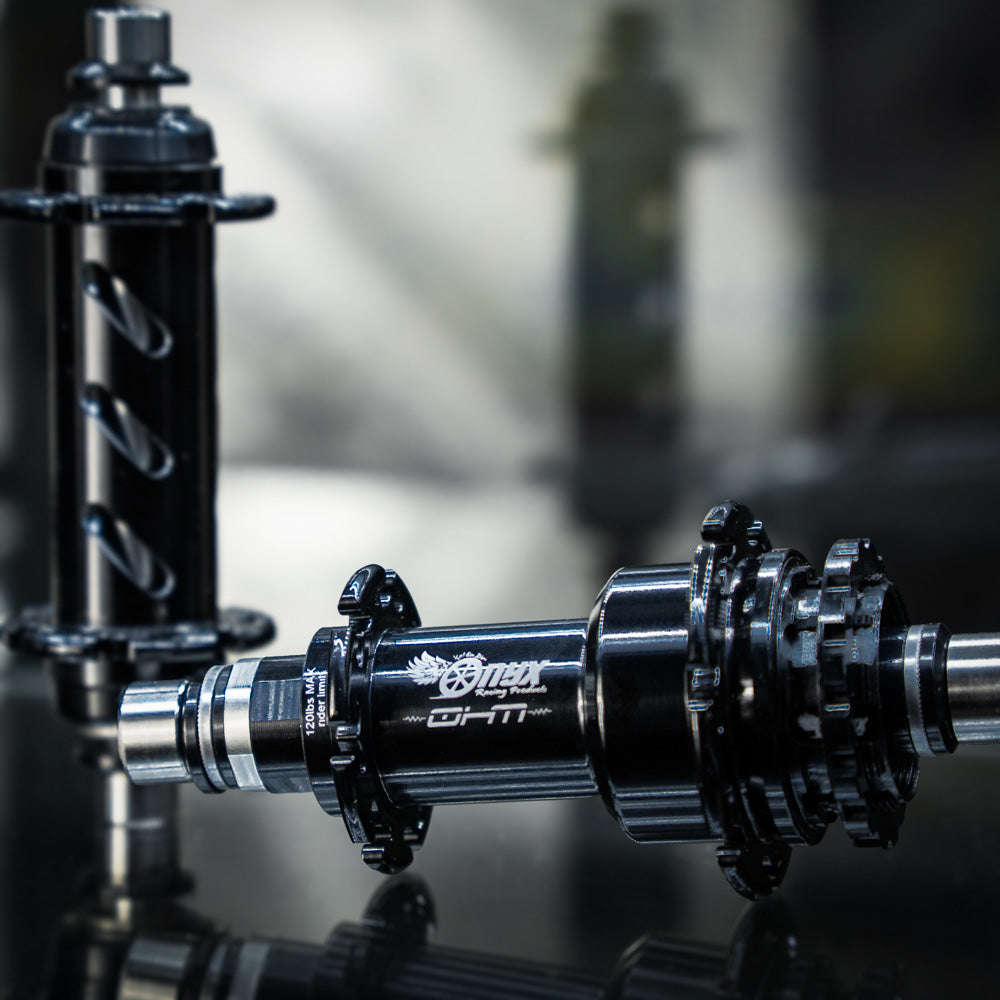Berd spokes have finally made their way into BMX Racing! The shoestring-like spokes are a brave attempt to redefine technology that’s remained relatively the same for decades. However, forward-thinking products usually require other components to follow suit, in order to maximize the performance gain potential!
Today we’re looking at Onyx’s latest compatibility fix for the Berd spokes, the Hook flange hub! In this article, we’ll highlight how this could be the better choice for Berd spoke users, as opposed to drilling traditional hubs.

Same Onyx, But With A Hook
Just as the name suggests, the Hook Flange Onyx Hub features, well a hook… on the flange.
Internally, it’s identical to the standard hub producing the same smooth rolling and instant engagement we’ve all come to expect. The only difference comes in the form of the modified flange interface.

But why go through the extra effort of designing a separate hub shell for such a small change?
Simply put, it’s a better and safer platform for Berd Spoke users.
What About Hub Drilling

Since the Berd Spoke is so new within BMX, other manufacturers have yet to invest in the platform. The popular fix at the moment is to drill out the hub flange holes. But as you’ll soon see, drilling is much more of a headache than picking up a hook flange hub.
Cons of Drilling
- Time Consuming
- Higher Chance of Failure
- Complicates The Wheel-Building Process
Firstly, drilling and sanding each hole is quite a time-consuming process. Building a wheel is hard enough, so adding an extra step of prep only complicates things further. In addition, drilling increases the chance of failure. If the holes are not properly sanded, the small metal burs left from drilling could tear the Berd spoke in either the wheel-building process or as you’re riding them. Finally, lacing a drilled hub with Berd spokes requires more steps than the hook flange process, complicating things further!
Pros of Drilling
- Don't Need Another Hubset
Really the only pro to drilling your hubs is not having to buy another hub set. But when you’re investing $8 a spoke, it seems silly to not go the extra mile and grab the correct hub. Now you can still go back to metal spokes after drilling, however, the drilling is likely to hurt the resale value of your expensive race hubs.

Pros of Hook Flange
- Specifically Designed For Berd Spokes
- Simple Lacing Process
- Lighter?
- Safest Choice
Obviously, the Hook Flange hub has a bit of an unfair advantage as it’s specifically designed for the Berd spokes. Because of this, it’s better suited to accept the spokes every step of the way. There’s no extra prep, and lacing is as simple as attaching the loop to the proper hook.
If you really want to get nerdy, the Hook Flange is technically a touch lighter as it doesn’t have a complete flange. Will you feel it? No. Would you even notice it? Also no. But just fun to point out.
Lastly, it’s the safest choice. Yes, you can make drilled hubs work, but using a system specifically designed to do what you’re trying to do is always going to be more effective.
Cons of Hook Flange
- Need to Buy a Separate Hubset
- Hyper-Specialized Use Case
Having to buy a separate hubset is quite the con. But most people looking at getting Berd spokes are committed to having the best BMX tech. When investing in a high-performance system such as this one, it’s best to do things right from the jump.
Putting It All Together
Ultimately, both drilling and hook flange hubs allow you to enjoy the benefits of Berd spokes. However, we see Hook Flange Hubs as the best way to use Berd spokes. It keeps the process simple and removes some potential failure points that come with drilling.
If you’re interested in looking at a set of Hook Flange hubs you can shop our available options HERE

But if you just want to learn more about Berd Spokes, feel free to reach out to us at info@fulltiltbike.com with any questions. You can also check out Berd’s FAQ section linked HERE
There’s a lot to consider when it comes to race wheels. Anyone who’s looking at Berd spokes is obviously a dedicated weight saver so be sure to check out some of our other posts revolving around wheel weight-saving products linked below.
- Written By Jonnie Vance



